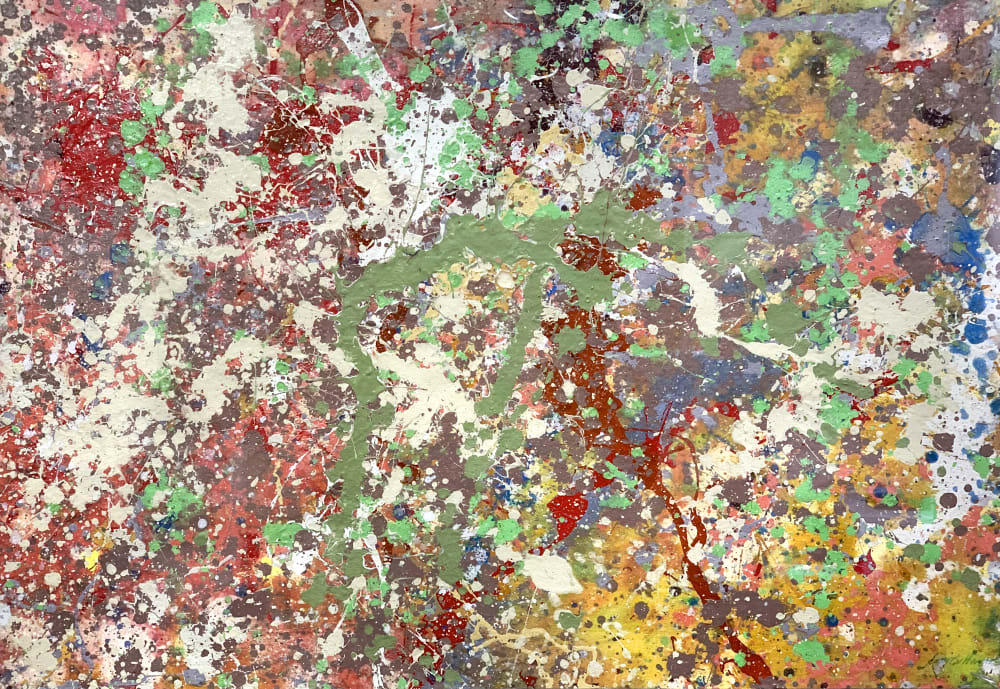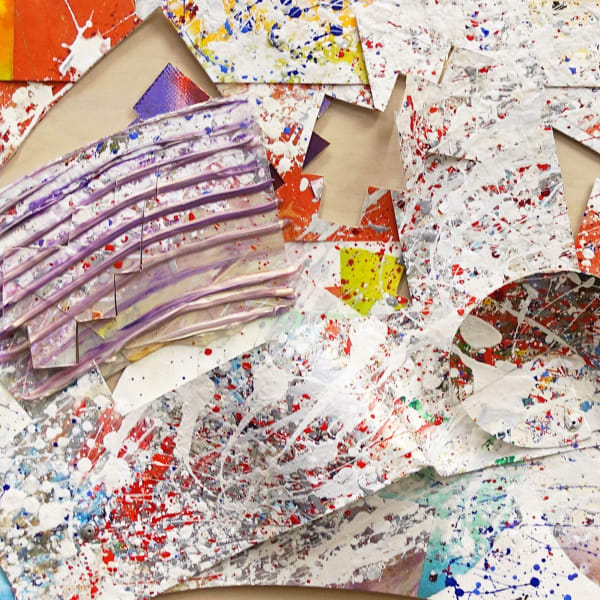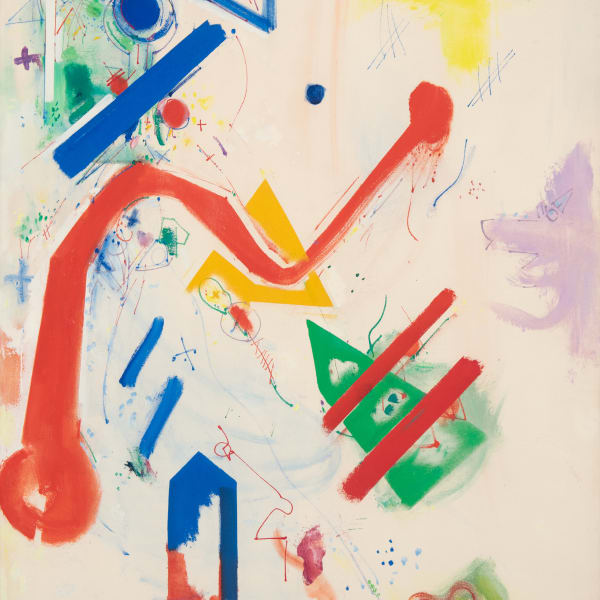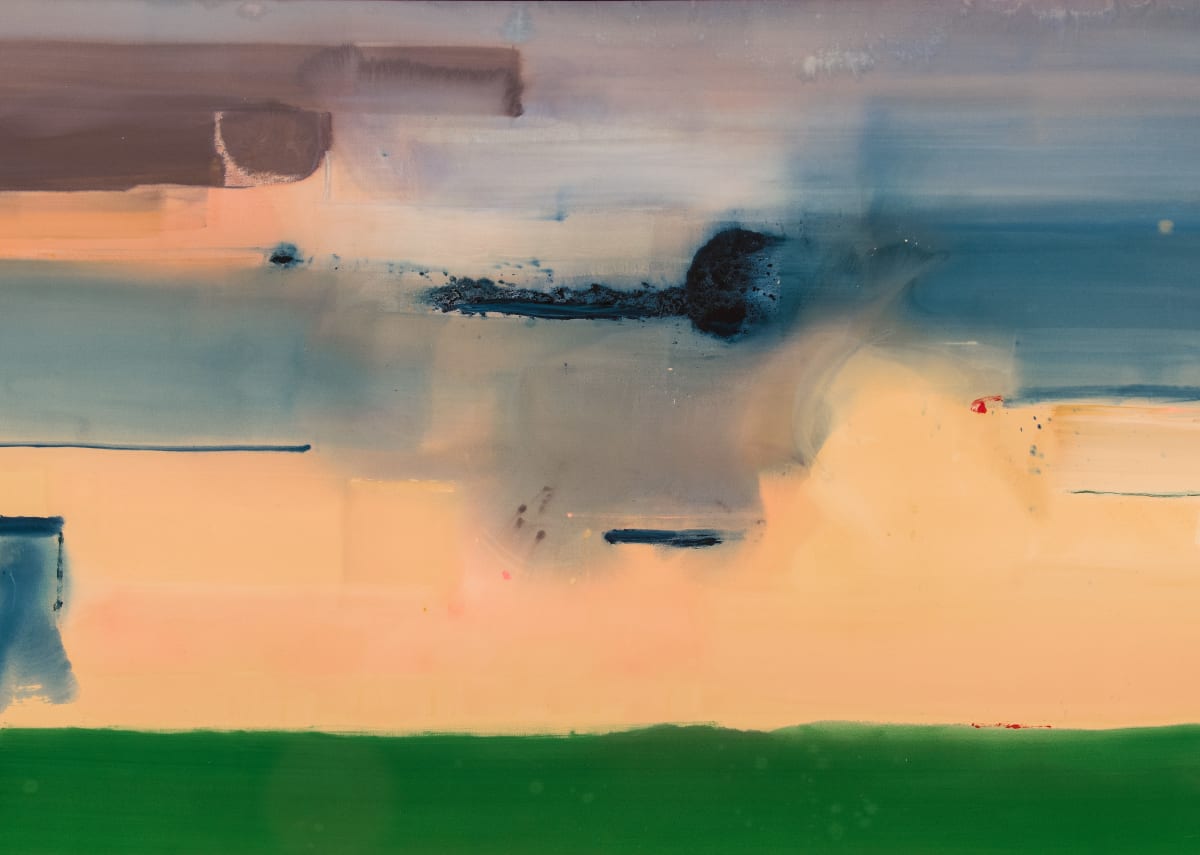
Sam Gilliam pushes the boundaries of abstract painting, questioning and expanding the very definition of what painting can be.
The work of pioneering Washington, D.C. painter Sam Gilliam pushes the boundaries of abstract painting, questioning and expanding the very definition of what painting can be. An aesthetic descendant of the Washington Color School, Gilliam took color field painting and the soak-stain technique into three dimensions, bursting onto the critical scene in the late 1960s with vast canvases freed from the stretcher and suspended from walls and ceilings in free, sweeping forms. His innovative use of support did not stop there, as the artist continually sought new avenues of expression. His later shaped works returned to the stretcher, but used small shaped canvases as collage elements, layering and fitting them together like puzzle pieces.
The work of pioneering Washington, D.C. painter Sam Gilliam pushes the boundaries of abstract painting, questioning and expanding the very definition of what painting can be. An aesthetic descendant of the Washington Color School, Gilliam took color field painting and the soak-stain technique into three dimensions, bursting onto the critical scene in the late 1960s with vast canvases freed from the stretcher and suspended from walls and ceilings in free, sweeping forms. His innovative use of support did not stop there, as the artist continually sought new avenues of expression. His later shaped works returned to the stretcher, but used small shaped canvases as collage elements, layering and fitting them together like puzzle pieces.
At the height of his popularity in the mid-1970s, Gilliam moved away from his sensuously colored drapes and began working in geometric canvas collage. Gilliam’s return to stretched, shaped support is typical of his constant reevaluation of his own work and ideas. Gilliam was unafraid to take his work in new directions even as he found both popular and critical acclaim.
The collages of the late 1970s and early 1980s often took a further step, incorporating three-dimensional elements that extend the surface of the work into the space of the viewer. While Gilliam had taken his earlier work off the wall by abandoning traditional support, these collages emphasize their geometric compositional structure with added three-dimensional elements. These two modes of working are united by a desire to explore the boundary between painting and sculpture, and to move into the space of the viewer in a manner that demands complex investigation.
Sam Gilliam was born in 1933, the seventh of eight children. His family settled in Louisville, Kentucky when he was a child, and while the city was formally segregated it was free from much of the racial violence that wracked nearby southern cities. The Gilliam family was a creative one, and Sam was encouraged to draw by his mother from a young age. He received undergraduate and graduate art degrees from the University of Louisville, and moved to Washington, D.C. in 1962.
Gilliam befriended the Washington Color School painter Thomas Downing at the opening of the younger artist’s first solo exhibition in the city, in 1963 at Adams Morgan Gallery. This friendship would prove pivotal for Gilliam. Downing encouraged his abstract impulse, steering him away from the hazy figurative style of his grad school years and toward an abstraction rooted in color and emotion. Downing, feeling spurned by the tastemaking critic Clement Greenberg in favor of his peers Kenneth Noland and Morris Louis, preached vehemently against Greenberg’s prioritization of surface and strict medium specificity, and Gilliam listened. Gilliam’s first mature works grew out of a period of experimentation between 1963 and 1965, during which time he began to develop his signature amorphous abstraction.
And yet, despite this close friendship with Downing, and despite Gilliam’s use of the soak-stain methods of earlier Color Field painters, Gilliam’s work “upset the traditional of modernist art that Color School paintings represents.” (1) His signature works brought together the vibrant, sensuous color of Field painting and the activation of space most often associated with contemporaneous Minimalism and Performance. Gilliam faced some criticism for working in high modernist abstraction instead of addressing the social and political situation of African Americans, but he firmly believed in the separation and equal importance of art and politics.
Gilliam has exhibited widely and to great acclaim since the early 1960s, including solo and group exhibitions at the Corcoran Gallery of Art, Washington; the Phillips Collection, Washington; The University of California, Los Angeles; The Studio Museum, Harlem; The Whitney Museum of American Art, New York; The Art Institute of Chicago; The Baltimore Museum of Art; and the Museum of Modern Art, New York, among many others. Gilliam continues to live and work in Washington, D.C.
1. Jonathan P. Binstock, Sam Gilliam: a retrospective. (Washington, D.C.: Corcoran Gallery of Art, 2005), 2.



























